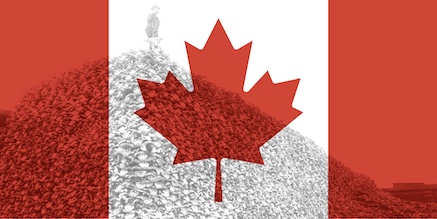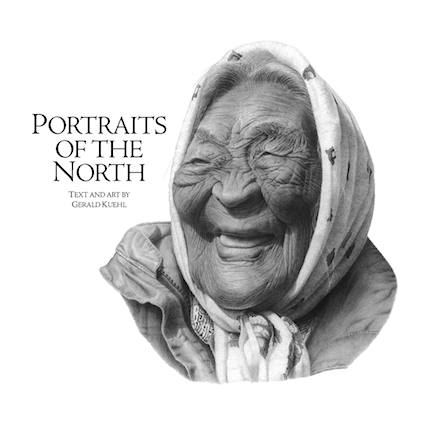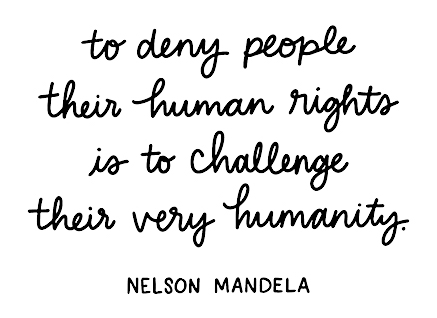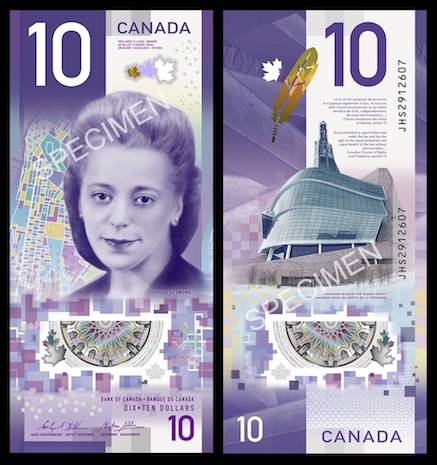O Canada…



Winnipeg, Canada
A year ago today, I created a Facebook “page” for good friend Gerald Kuehl, helping to promote his book Portraits of the North, and thereby further disseminating the compelling “stories” that Ger has been entrusted to pass on by his subjects.
I’m happy to share that, according to Facebook’s traffic reports, in the past 12 months over 300,000 have had posts from the FB page enter their screen (“post reach” or visibility, in FB metrics-speak) — an average of (+/-) 6000 people per week along with (+/-) 1000 “post engagements” (the number of people who have engaged with the weekly posts through “likes, comments, shares and more).”
It’s really encouraging to see these moving, engaging pencil portraits of First Nations and Métis elders — “the last generation born on the land” as they have been described, with each having been drawn painstakingly with love, respect, and intention — being shared and appreciated so widely. Huge thanks (!) are due to the family, friends, relations, supporters, and community members of the individuals portrayed… please keep sharing the legacies!
Miigwetch. Ekosani. Masi Cho. Wopida. Ayhay. Merci. Thank you!
Link to the Facebook page for Portraits of the North here. Buy the book at your local booksellers’ or here. I’ve blogged about Gerald Kuehl’s incredible work previously, here and here.

Paris, France
70 years ago today, on 10 December 1948, the Universal Declaration of Human Rights was adopted by the United Nations General Assembly at Palais de Chaillot, Paris. The Declaration arose directly from the experience of the Second World War and represents the first global expression of rights to which all human beings are inherently entitled. The date of 10 December was established as Human Rights Day in 1950, and has been commemorated annually around the world on this date ever since.
These days, the advancement and promotion of worldwide human rights are confronted by growing nationalism, a widespread misinformation epidemic, and the ascendency of identity politics which draw strength from ethnic or religious conflict. All the more reason to celebrate (and disseminate) comprehensive statements of inalienable human rights, I say!
The Universal Declaration of Human Rights is a call to freedom and justice for people throughout the world. Many consider the Declaration to be the most important document ever written, essentially “the international Magna Carta of all mankind.” As such, it has also become the most translated document in the world.
Do you know your human rights? Read the full text of the Universal Declaration of Human Rights here, or download a PDF of the text in English here. Watch an excellent type-and-graphic rendering of the Declaration on Vimeo here.


Winnipeg, Canada
At a ceremony held on 19 November at The Canadian Museum for Human Rights here in Winnipeg, Canada’s new $10 banknote was launched into circulation. The face side of the note features civil rights activist Viola Desmond, first Canadian woman to be profiled on a regularly circulating banknote, with the The Canadian Museum for Human Rights on the other.
The first vertically oriented banknote in Canada, the design includes an artistic rendering of Halifax’s north end and waterfront, where Viola Desmond lived and owned a beauty salon; also depicted is an eagle feather, which the Bank of Canada says represents the ongoing journey toward recognizing rights and freedoms for Indigenous people.
On Nov. 8, 1946, Desmond took in a movie at the Roseland Theatre in New Glasgow while her car was getting fixed. When she refused to leave the whites-only section on the main level of the theatre, Desmond, 32, was dragged out by police and jailed. Black people were only allowed to sit in the balcony of the theatre. Her defiance shone a light on the civil rights movement and helped motivate the struggle against racial segregation in Canada.
Segregation was legally ended in Nova Scotia in 1954, in part because of the publicity generated by Desmond’s case. She is often described as Canada’s Rosa Parks, even though Desmond’s act of defiance happened nine years before Parks refused to give up her seat on an Alabama bus.
Read more in a CBC news report here. Read an in-depth primer article by The Globe and Mail here. Watch a Heritage Minute (video) about Ms. Desmond here.
Images above: The new vertical Canadian $10 bill that goes into circulation in the next month; Viola Desmond’s sister Wanda Robson with the new bill (at the launch ceremony in Winnipeg).
Image below: The old/outgoing $10 bill featuring Canada’s first prime minister and “founding father,” John A. Macdonald, along with a western osprey (Pandion haliaetus) — I’m happy to see the end of Macdonald in my wallet (he’s now widely seen as responsible for horrific genocide of Indigenous People in this country) — though I did quite like the large fish hawk.

Winnipeg, Manitoba
Canada, which just finished celebrating its 150th year as a “nation,” has a big problem. Since Europeans first arrived, the founding fathers “…used racism, bigotry and discrimination as a tool to not only assimilate First Nations into the Canadian polity, but to engage in a deliberate policy of genocide both cultural and physical…” Surprisingly, there are still many Canadians who are not aware of the country’s dark history, which makes it difficult for them to help bring about the positive change that is so needed.
A decade ago, the Truth and Reconciliation Commission of Canada (TRC) was organized by the parties of the Indian Residential Schools Settlement Agreement. Established in June 2008 with the purpose of documenting the history and impacts of the Indian residential school, it provided former residential school attendees an opportunity to share their experiences during public and private meetings held across the country.
In June 2015, the TRC released an Executive Summary of its findings along with 94 “calls to action” regarding reconciliation between Canadians and Indigenous peoples. The Commission officially concluded in December 2015 with the publication of a multi-volume report that concluded the school system amounted to cultural genocide. The TRC’s “calls to action” provide a clear path forward…
Links to two significant documents are provided here (in PDF form). Click on the images above for access and to download the documents. Please feel free to share this post…
Winnipeg Beach, Manitoba
I’ve enjoyed living with my partner Evelin in this quiet little town for the past few years, here on the Western shore of Lake Winnipeg (the world’s 10th-largest freshwater lake by area, slightly smaller than Belgium). Water levels can fluctuate significantly in the lake’s relatively shallow southern basin, and strong or sustained winds can whip up powerful waves…
In 2016, Winnipeg Beach undertook extensive re-building of the longstanding “boardwalk” along the beach, following storm-damage and shoreline flooding the previous year. The broken and eroded wooden boardwalk was replaced by a concrete breakwater-walkway, and thousands of “engraved bricks” were installed (including 3900 that were “grandfathered” from the walk’s original wooden planks) — most commemorated the names and/or passages of loved ones who once were part of (or who regularly visited) this quiet resort/community. As part of its efforts to raise funds for the beachfront reconstruction, the town “sold” inscribed bricks (replete with a Certificate of Title), of which I “bought” four. It was fun to “leave a mark,” and easier (also more sustainable) than carving in trees. (-:
As I had not seen any previous acknowledgment along the boardwalk of the original Indigenous inhabitants of this shoreline, that seemed like an obvious first brick. Three more offered the opportunity to share some “words to live and work by” from the Maxim/Dictum that I have referenced as a Leitmotif or manifesto for the past several decades. (Technical problems with the “brick-production” delayed the installation until autumn of 2017, but I was happy to see these finally put in place…).
Guest Blog by Dr. Derek Kornelsen
Recently, terms like decolonization and community engagement have become buzzwords in popular discourses about Indigenous health research. But what does decolonization actually mean? How can we really try to decolonize community engagement? If this is to make any sense, and provide any kind of realistic guide for action, we need to start by gaining some sense of how colonization has impacted — and continues to impact — Indigenous communities and Western academic/research institutions. Only then can we consider why community engagement matters and what a decolonized form of community engagement might look like.
A good starting point for understanding colonialism in Canada is to recognize that there is a distinct form of colonialism at work here — both past and present. This form is called settler colonialism. Typical understandings of colonialism usually refer to a situation where a colonial entity oppresses and manipulates foreign peoples in order to extract wealth and resources — India and South Africa are key examples. In these cases, there is a point at which we see the colonial power officially leaving, and the colonized peoples achieving some level of independence. On the other hand, in cases of settler colonialism, the colonial entity doesn’t leave, but continues to bring in more and more settlers in order to reproduce itself in the colonized space — Canada, USA, Australia, and New Zealand are the usual suspects here. The particularly horrifying aspect of this practice — as scholars like Patrick Wolfe have discussed in depth — is that, in order to reproduce itself in a given place, the settler colonial entity must ‘destroy to replace’. In Canada, we’ve seen this through overt genocidal acts that morphed into the kinds of cultural genocide that have occured throughout the residential school era.
Read more here…
Dr. Derek Kornelsen is an Assistant Professor in the Department of Community Health Sciences at the University of Manitoba. His research focuses on examining/contrasting Western and Indigenous philosophies and institutional frameworks, with a particular emphasis on developing a theoretical framework grounded in an understanding of the dynamics and impacts of Settler Colonialism. This theoretical framework enables a sensitivity to 2 key under-researched areas in Indigenous health and wellness research: the impacts of the disruption of Indigenous peoples’ relationships with land and environment; and strategies for decolonizing key institutions that Indigenous peoples must access (health as well as political, legal, educational, economic institutions). Broadly speaking, this theoretical frame contributes to the development of robust Indigenous determinants of health and wellness. He is currently involved in developing a number of local, national, and international research projects and partnerships in areas of environmental health and Indigenous health and wellness.
Winnipeg, Canada
I’ve long held that “we live in stories,” (a notion I first heard expressed in those four eloquent words by colleague Bruce Brown of Brighton, UK, at a Vancouver GDC conference I was participating in a decade ago). This leitmotif was driven home once again for me yesterday morning while attending a keynote presentation by Gerald Kuehl to hundreds of Manitoba art teachers at the Winnipeg Art Gallery.
Gerald enraptured those present with passionate, poignant story-telling of his ventures into Manitoba’s and Nunavut’s far-flung communities of First Nation peoples… where he has devoted the past decade-and-a-half to the exquisite portrayal (by means of graphite on paper) of elders—the spontaneous standing ovation at the end of his presentation could hardly do justice to the devoted narrative loosed by his illustrative talents.
This evening Gerald shared an e-mail with me from someone else in the audience on Friday (I hope it’s OK if I pass that on here): “Wow… today was so moving. I can’t begin to find the words to say how much of what you do touches my heart. I cried throughout, it was so good. You understand us and what we have gone through as a people. I wish there were more people like you. I wish people didn’t hate us just because of who we are but, they do. It’s everywhere and then I have the very good fortune to meet someone like you, someone who does not judge. You are such a good man with a good heart. As my future daughter-in-law says, “I may be white on the outside but, I am brown on the inside.” And this is something you can say too. Thank you so much Gerald and I thank the Creator for showing me you.”
The images above are of Charlie Learjaw and Luke Moose. You can view more of Gerald’s incredible graphite portraiture on his website here. In case you’re wondering, Gerald spends approximately one month on each portrait—he only works in monochrome, in part, because he is colour-blind).
Winnipeg, Canada
I’ve always been interested in the oral narratives that are passed on from one generation to another. The launch of INDIGO’s Mother Tongue project provided incentive to begin a series of graphic “copyfree” posters featuring such stories as told by First Peoples. Above are the first two pieces: Two Wolves features the well-known Cherokee tale of the battle between good and evil as told by an elder to his grandson; Turtle includes the Anishinaabe story of how the turtle got its shell, and passes on the knowledge of the 13 large moons and 28 smaller segments that appear on the back of every turtle (many First Nations descendants are taught that the turtle shell represents the perfect depiction of the lunar year—I learned of this from one of our Indigenous clients).
You can read the stories (or download, distribute, or print these posters) here: Two Wolves (1.2 MB PDF); Turtle (1.3 MB PDF).
Thanks to Adrian J. K. Shum for your assistance. Credit for the wolf images goes to www.firstpeople.us



Winnipeg, Canada
All this week, hundreds of Indian Residential School survivors, together with Aboriginal leaders, church groups, government representatives, and members of the public gathered locally at The Forks for the opening ceremonies of the first National Event of the Truth and Reconciliation Commission of Canada (TRC). Former students and others whose lives have been fundamentally impacted by the residential schools system have come together to talk with each other and to share their experiences with the Commission. Included in those heart-wrenching conversations are the voices of former staff and other school workers who have been contacted and encouraged to come forward.
This national event (the first of seven to be held across Canada over the next five years), is of great importance for non-aboriginal Canadians who may have had nothing whatsoever to do with the schools directly, but who have everything to gain from understanding what actually happened at them. It has drawn together thousands to participate in cultural exhibitions by First Nations, Métis, and Inuit groups, film screenings, plays, art exhibits, and musical performances.
Word clouds: I thought it would be interesting to use Wordle as a tool to compare several different apologies (and the various vocabularies deployed) regarding Aboriginal survivors of residential schools.* Wordle gives greater prominence to words that appear more frequently in a selected source text. The top image represents the formal apology given in the House of Commons by the Canadian Prime Minister on behalf of the Government of Canada on 11 June 2008. The middle image represents the historic formal apology given to the Aboriginal people of Australia by Prime Minister Kevin Rudd on behalf of its parliament and government on 12 February 2008. The bottom image represents the English version of the apology of the Anglican Church of Canada to Native People as delivered by the Primate, Archbishop Michael Peers, to the National Native Convocation in Minaki, Ontario on 6 August 1993.
*Residential schools for Aboriginal people in Canada date back to the 1870s. Over 130 residential schools were located across the country, and the last school closed in 1996. These government-funded, church-run schools were set up to eliminate parental involvement in the intellectual, cultural, and spiritual development of Aboriginal children. During this era, more than 150,000 First Nations, Métis, and Inuit children were placed in these schools often against their parents’ wishes. Many were forbidden to speak their language and practice their own culture. While there are an estimated 80,000 former students living today, the ongoing impact of residential schools has been felt throughout generations and has contributed to social problems that continue to exist.